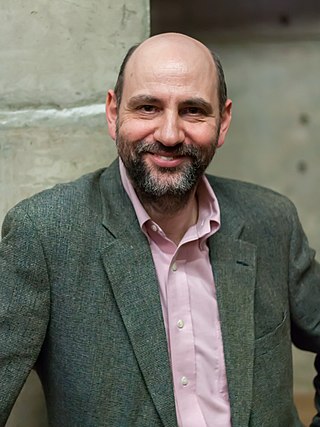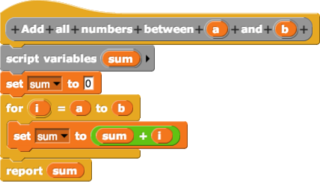Related Research Articles
An integrated development environment (IDE) is a software application that provides comprehensive facilities for software development. An IDE normally consists of at least a source-code editor, build automation tools, and a debugger. Some IDEs, such as IntelliJ IDEA, Eclipse and Lazarus contain the necessary compiler, interpreter or both; others, such as SharpDevelop and NetBeans, do not.

Martin Fowler is a British software developer, author and international public speaker on software development, specialising in object-oriented analysis and design, UML, patterns, and agile software development methodologies, including extreme programming.
In computer science, a compiler-compiler or compiler generator is a programming tool that creates a parser, interpreter, or compiler from some form of formal description of a programming language and machine.
In computer science, a preprocessor is a program that processes its input data to produce output that is used as input in another program. The output is said to be a preprocessed form of the input data, which is often used by some subsequent programs like compilers. The amount and kind of processing done depends on the nature of the preprocessor; some preprocessors are only capable of performing relatively simple textual substitutions and macro expansions, while others have the power of full-fledged programming languages.

The Meta-Object Facility (MOF) is an Object Management Group (OMG) standard for model-driven engineering. Its purpose is to provide a type system for entities in the CORBA architecture and a set of interfaces through which those types can be created and manipulated. MOF may be used for domain-driven software design and object-oriented modelling.

In computing, a visual programming language, also known as diagrammatic programming, graphical programming or block coding, is a programming language that lets users create programs by manipulating program elements graphically rather than by specifying them textually. A VPL allows programming with visual expressions, spatial arrangements of text and graphic symbols, used either as elements of syntax or secondary notation. For example, many VPLs are based on the idea of "boxes and arrows", where boxes or other screen objects are treated as entities, connected by arrows, lines or arcs which represent relations. VPLs are generally the basis of Low-code development platforms.
A domain-specific language (DSL) is a computer language specialized to a particular application domain. This is in contrast to a general-purpose language (GPL), which is broadly applicable across domains. There are a wide variety of DSLs, ranging from widely used languages for common domains, such as HTML for web pages, down to languages used by only one or a few pieces of software, such as MUSH soft code. DSLs can be further subdivided by the kind of language, and include domain-specific markup languages, domain-specific modeling languages, and domain-specific programming languages. Special-purpose computer languages have always existed in the computer age, but the term "domain-specific language" has become more popular due to the rise of domain-specific modeling. Simpler DSLs, particularly ones used by a single application, are sometimes informally called mini-languages.
In computer-based language recognition, ANTLR, or ANother Tool for Language Recognition, is a parser generator that uses a LL(*) algorithm for parsing. ANTLR is the successor to the Purdue Compiler Construction Tool Set (PCCTS), first developed in 1989, and is under active development. Its maintainer is Professor Terence Parr of the University of San Francisco.
Language-oriented programming (LOP) is a software-development paradigm where "language" is a software building block with the same status as objects, modules and components, and rather than solving problems in general-purpose programming languages, the programmer creates one or more domain-specific languages (DSLs) for the problem first, and solves the problem in those languages. Language-oriented programming was first described in detail in Martin Ward's 1994 paper Language Oriented Programming.
In computer programming, Intentional Programming is a programming paradigm developed by Charles Simonyi that encodes in software source code the precise intention which programmers have in mind when conceiving their work. By using the appropriate level of abstraction at which the programmer is thinking, creating and maintaining computer programs become easier. By separating the concerns for intentions and how they are being operated upon, the software becomes more modular and allows for more reusable software code.

Matthias Felleisen is a German-American computer science professor and author. He grew up in Germany and immigrated to the US in his twenties. He received his PhD from Indiana University under the direction of Daniel P. Friedman.

Racket is a general-purpose, multi-paradigm programming language and a multi-platform distribution that includes the Racket language, compiler, large standard library, integrated development environment (IDE), development tools, and a set of additional languages including Typed Racket, Swindle, FrTime, Lazy Racket, R5RS & R6RS Scheme, Scribble, Datalog, Racklog, ALGOL 60 and several teaching languages.
Model-driven engineering (MDE) is a software development methodology that focuses on creating and exploiting domain models, which are conceptual models of all the topics related to a specific problem. Hence, it highlights and aims at abstract representations of the knowledge and activities that govern a particular application domain, rather than the computing concepts.
Matthew Flatt is an American computer scientist and professor at the University of Utah School of Computing in Salt Lake City. He is also the leader of the core development team for the Racket programming language.
JetBrains MPS is a language workbench developed by JetBrains. MPS is a tool to design domain-specific languages (DSL). It uses projectional editing which allows users to overcome the limits of language parsers, and build DSL editors, such as ones with tables and diagrams.
It supports language-oriented programming. MPS is an environment for language definition, a language workbench, and integrated development environment (IDE) for such languages.
Xtext is an open-source software framework for developing programming languages and domain-specific languages (DSLs). Unlike standard parser generators, Xtext generates not only a parser, but also a class model for the abstract syntax tree, as well as providing a fully featured, customizable Eclipse-based IDE.

Red is a programming language designed to overcome the limitations of the programming language Rebol. Red was introduced in 2011 by Nenad Rakočević, and is both an imperative and functional programming language. Its syntax and general usage overlaps that of the interpreted Rebol language.
Robert Bruce Findler, colloquially known as "Robby", is an American computer scientist, currently, a professor of computer science at Northwestern University. He is also a member of the PLT group and, as such, responsible for the creation and maintenance of DrRacket. In addition to DrRacket, Findler has contributed numerous components to Racket and supervises its Web-based software library, called PLaneT. Findler is also a leading team member of the ProgramByDesign project.
References
- 1 2 Fowler, Martin. "LanguageWorkbench" . Retrieved 14 April 2015.
- 1 2 Fowler, Martin (12 June 2005). "Language Workbenches: The Killer-App for Domain Specific Languages?" . Retrieved 14 April 2015.
- ↑ Feltey, Daniel; Florence, Spencer P.; Knutson, Tim; St-Amour, Vincent; Culpepper, Ryan; Flatt, Matthew; Findler, Robert Bruce; Felleisen, Matthias (2016). "Languages the Racket Way" (PDF). 2016 Language Workbench Challenge (65). Retrieved 9 June 2019.
- ↑ Tobin-Hochstadt, S.; St-Amour, V.; Culpepper, R.; Flatt, M.; Felleisen, M. (2011). "Languages as Libraries" (PDF). Programming Language Design and Implementation.
- ↑ Flatt, Matthew (2012). "Creating Languages in Racket". Communications of the ACM. Retrieved 2012-04-08.
- ↑ "JetBrains MPS: Domain-Specific Language Creator".
- ↑ "Melange".
- ↑ "The Spoofax Language Workbench".
- ↑ Kats, Lennart C. L.; Visser, Eelco (2010). "The Spoofax language workbench: rules for declarative specification of languages and IDEs.". Proceedings of the 25th Annual ACM SIGPLAN Conference on Object-Oriented Programming, Systems, Languages, and Applications, OOPSLA 2010. doi:10.1145/1869459.1869497.
- ↑ "Xtext".
- ↑ Idani, Akram; Ledru, Yves; Vega, German (December 2020). "Alliance of Model Driven Engineering with a proof-based Formal Approach". Innovations in Systems and Software Engineering (ISSE), NASA Journal. 6 (3): 289–307. doi: 10.1007/s11334-020-00366-3 .
- ↑ "Meeduse".